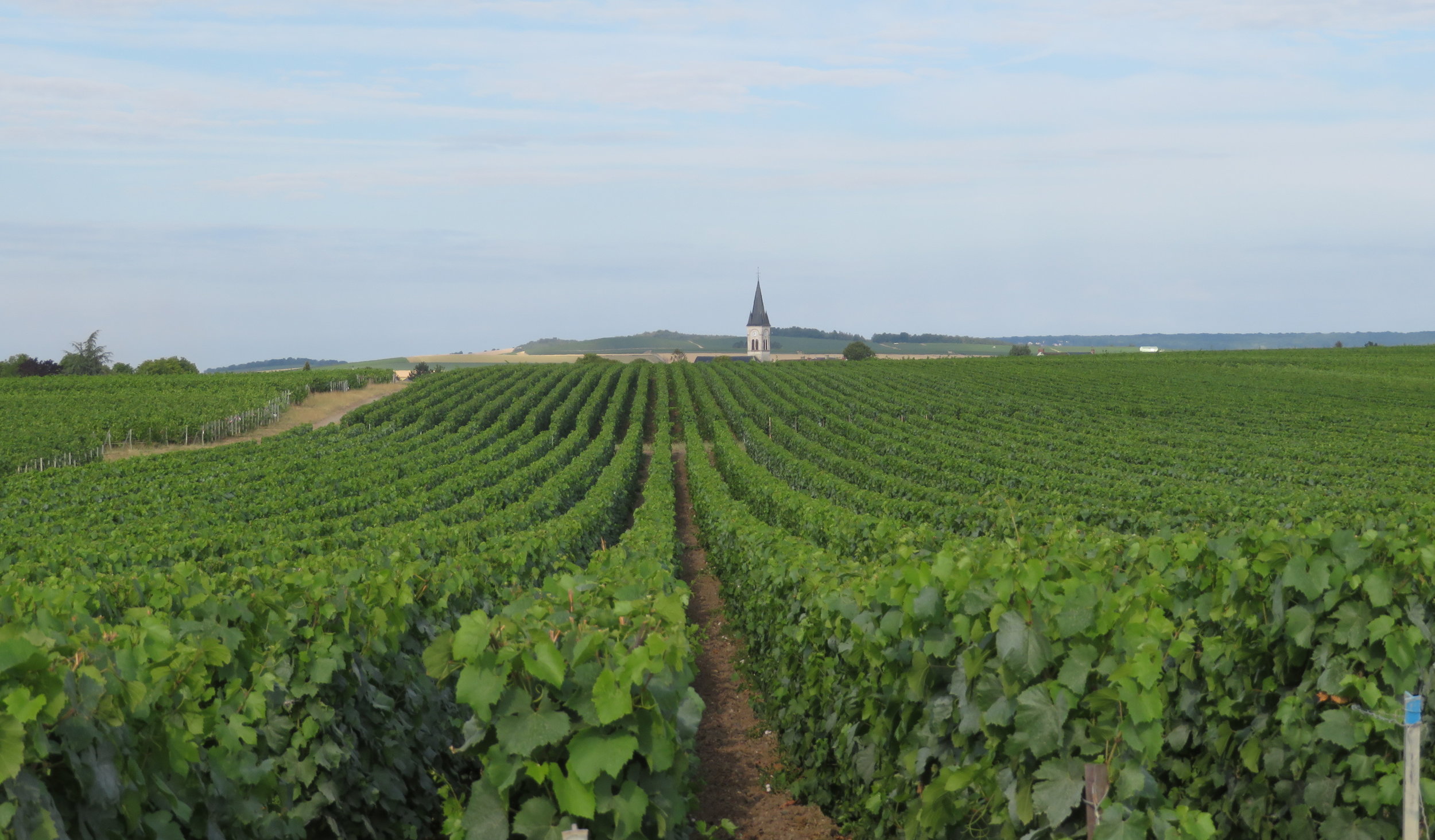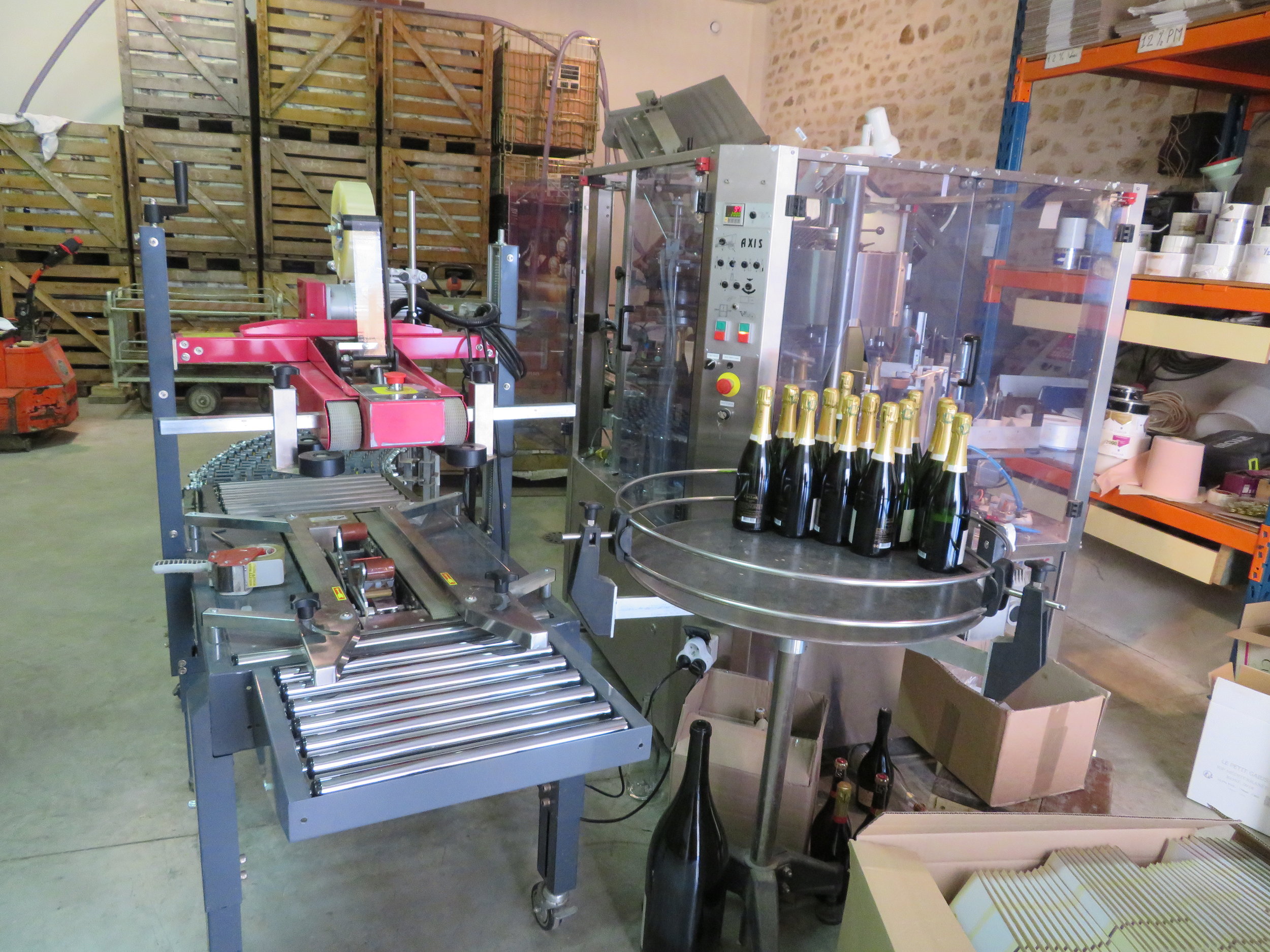Blue View - Drinking Our Way Through the Champagne Region
/We’re now trekking our way through champagne country
For as long as I've known her, Marcie's drink of choice has been champagne, and, come to think of it, I'm kind of fond of it myself. We're now in France's celebrated Champagne wine region and we're looking forward to sampling some of the local offerings. I'm also quite keen on seeing how champagne is made - I know how still wine is made, but how do they create the bubbles that make sparkling wine, and especially champagne, so special. We were fortunate enough to be in the right place at the right time and got an invitation to tour Champagne Cuillier, a small family run champagne cellar... complete with a tasting.
First, a little about champagne. By EU law and the laws of most countries, a sparkling wine can only be labeled "Champagne" if it is made following a very strictly defined traditional method, using only grapes grown in the Champagne Region of France. (BTW, because of the wording of a 2005 agreement between the U.S. and France, certain sparkling wines that already carried the label "Champagne" could continue to do so. Thus, much to the chagrin of the French, that $4 bottle of Korbel sparkling wine that tastes nothing like a bottle of real champagne can label its wine "California Champagne".)
As we trek through the region, we see vineyards everywhere, and almost every village has a church and half a dozen, if not 20 or 30 small champagne makers. Champagne Cuillier is one of these small champagne makers, family owned and operated since 1904. They grow their own grapes on three different parcels of land within the region, and produce 50,000 bottles a year. Their facility in the village of Pouillon wasn't originally on our route, but we figured out a way to pass through there with only a small detour. Best of all, despite the fact that we turned up on their door step with backpacks and obviously weren't going to buy much, if any, champagne, they graciously showed us around their cellars, explained the process and offered us samples of their different varietals. If only they bottled it in lightweight plastic, we would happily have tossed our water bottles.
I found the process for making it fascinating. They start with three different grapes: Chardonnay, Pinot Noir, and Pinot Meunier. Then the process is as follows:
Primary fermentation. The grapes are pressed and filtered, then fermented in vats, just like any other wine. The result is a very acidic - not ready to drink, still wine.
Assemblage. Wines from the different varieties, vineyards and vintages are blended to produce the unique taste of each label.
Second Fermentation. The wine is decanted into bottles and cane sugar and yeast is added. Each bottle is then sealed with a bottle cap, much like a beer bottle, and stored on its side for three to five years in a cool cellar. The yeast consumes the sugar, producing carbon dioxide. This yeast "flatulence" (I'm pretty sure the vintners don't call it this, but, after all, it is gas produced as part of the digestive process) is what makes all those bubbles. As the yeast consumes the sugar, the little yeast organisms begin to die, leaving a sediment of tiny yeast bodies in the bottom - again, probably not the term used by the vintners. This sediment, called 'lees', settles to the low side of the bottle. Now the tricky part - getting the sediment out of the bottle.
Riddling. The bottles are placed in racks, neck downward at an angle of 75 degrees... not quite upside down. Up until only a few years ago, a person would give each bottle a 1/8th turn each day for about eight weeks. An experienced "riddler" could turn 30,000 bottles a day - and what a fun job that must have been. Now there's a machine that does the job automatically. The end result is that all the sediment settles into the neck of the bottle.
There’s all those dead yeast bodies.
The riddler machine.
Disgorging. Each bottle is placed upside down in another rack with the neck immersed in a sub-freezing salt water bath for about 20 minutes. This freezes the sediment and a small amount of champagne in the neck of the bottle. The bottle is then turned right side up, the cap is popped off, and the pressure of the carbonated champagne forces the frozen sediment plug to pop out.
Adding the dosage. Depending on the dryness or sweetness desired in each label, a small amount of sugar is added to each bottle, then enough wine is added to top it up.
The corking and labeling machine.
Corking and labeling. The bottles are corked, secured with the wire security cap and labeled - ready for sale.
An interesting tidbit:
There are only a certain number of acres within the region that are allowed to grow the grapes used for champagne, making the land quite valuable. An acre of land just outside the region would typically be worth $2500 while just across the road, land that can be used to grow champagne grapes would be worth around $500,000 an acre!
And now, after all that work, it's time to relax and have a glass or two. See you next week.
Thanks to Marie-Paule and Patrick Cuillier, who graciously interrupted their busy day to explain the champagne making process to us at the family's facility in Pouillion and to Vincent Cuillier, who patiently answered all the questions I didn't think to ask while we were there.
BTW - Cuillier Champagne is now exported to the U.S. It’s curently only available in New York, New Jersey and Florida, but they plan to broaden their market, so keep an eye out.
Join us next week as we stumble upon the greatest bike race in the world - the Tour de France…









